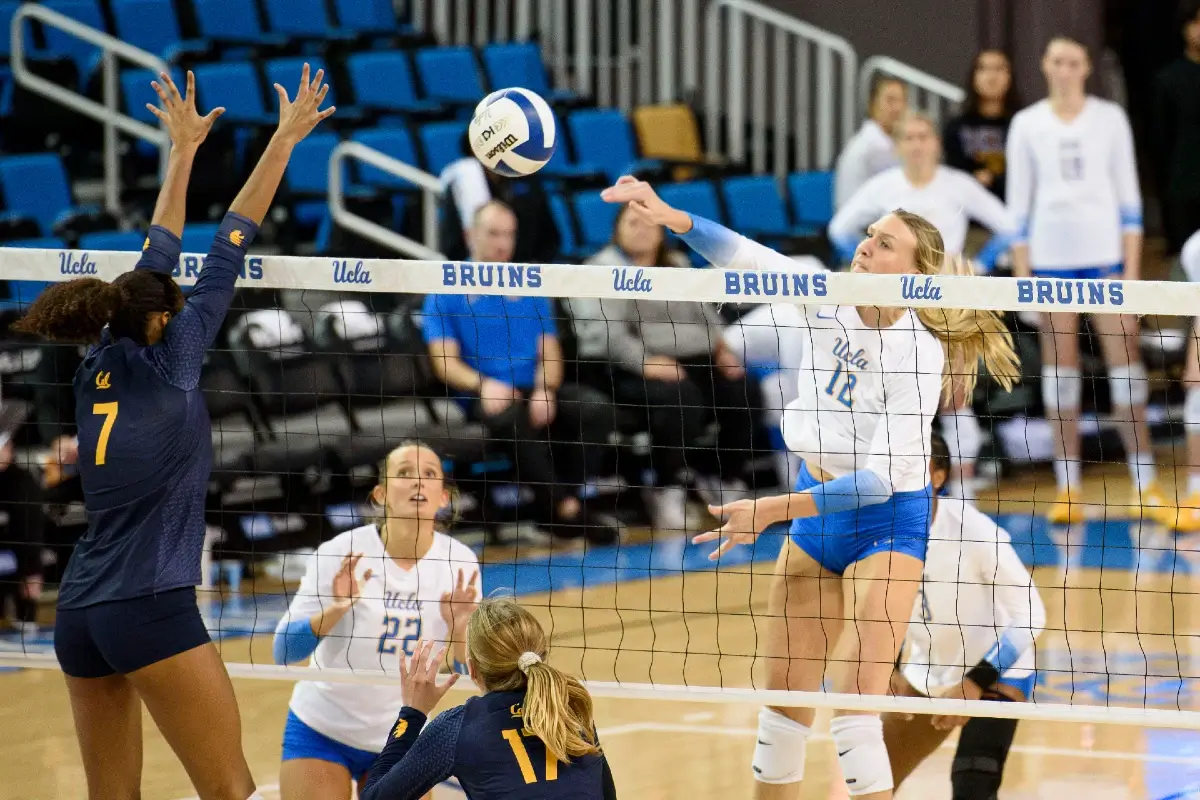Last Updated: February 8, 2024
Whether you’ve been playing volleyball for a long time or you’re just starting out, it’s really important to know about the middle blocker position.
Often referred to as the tallest player in the team, the middle blocker is positioned in the middle front. Their primary role is to block the ball from getting over the net, serving as the initial line of defense and often the most important one.
In this guide, I’ll talk all about the middle blocker and what it takes to do a good job in this position.
Defense vs. Offense

The middle blocker isn’t all about defense. Sure, they’ll need to block hitters from the other team and analyze their hitting strategies. But given the position on the court, this player is also known as the middle hitter.
The middle blocker, in simple terms, is also an attacker. Choose this position and you will not only turn blocks into offensive play, but you’ll most likely receive multiple sets from the setter of the team. You must be a top-notch attacker as well.
The position isn’t fixed, as flexibility is also required. Switching back to the middle position at the front is mandatory once the ball is served. Despite being in the middle, the middle blocker must also switch left and right in order to block the ball.
Now, as you get into this position, your coach will probably give you a few useful instructions to remember, not to mention the rules. Here’s a brief overview:
- You can’t touch the net.
- You can’t step under the net.
- You can touch the ball over the net if you’re blocking.
- The middle blocker is not allowed to hold the ball while hitting or blocking.
- Blocking a serve from the opposing team is prohibited.
Anyone in this position will become familiar with the basic rules. But then, some middle blockers are better than others. Take Anzani or Lisinac in men’s volleyball, for example, not to mention Torres or Oliveira in women’s volleyball.
The position is glamorous and active, so everyone wants it. But then, it’s incredibly difficult to master. Here’s how to stand out in the crowd.
How to Excel as a Middle Blocker
It’s All About Data
As crazy as it may seem, your intel is what makes the difference in the game. A top-notch middle blocker requires good reflexes and flexibility, indeed, but intel is more valuable. At this point, it’s imperative to study the opponent’s previous games.
To be a good middle blocker, you need to know how each of the opponent players hit. In volleyball, positions rotate, so there are more players that could hit in a team. Each player has their own style.
Some of them go in a certain direction only. Some others count on power or strength. Others use tricky hits, rather than force. Then, there are players who alternate directions and so on.
While you can get much of this data from previous games, you’ll also have to pay attention throughout the game too, learn how they work and what their style is. That’s one of the things that makes this position so difficult to master.
The Setter is the Secret
Your coach has likely taught you how to wait by the net with your knees bent or what kind of distance to keep from the net. Everyone should know these things. But talking about data and intel, observation is often trainable, yet no one’s going to tell you about it.
When observing hitters and their styles or patterns, there’s one position that can dictate the direction of the game. Being able to read this position can give you some hints about what’s about to happen, hence the necessity of paying attention to it.
While many middle blockers focus on hitters, the truth is it all starts with the setter. The setter is one of the key players in attack, so it pays off keeping a close watch at all times. The setter is more of concern than the hitters, who are more important than occasional or row sitters.
If a setter gets a super fast pass, you better get ready for a dumb. If the setter ends up in the middle and gets a pass, chances are the ball will go to the opposite or outside hitter.
In terms of mindset and observation, it pays off knowing that most setters have certain levels of chemistry with their teammates. It’s up to you to determine who the setter gets along with. The top pair is likely to create more trouble, hence the necessity of observation.
You can often see these things by checking previous games too.
What makes the setter observation so critical is the fact that their body can also provide some clues about the set direction.
Know Where the Ball is Going
Once again, this is a matter of observation. It would definitely help if you checked some of your opponents’ previous games.
Simply put, when you act, your position is exposed. You’ll need a second to recover the position and stability. But for that second, your position is the most vulnerable one.
The opposite team is more likely to attack or roll in your area due to this weakness. Obviously, that’s what a good team would do, but it isn’t always the case, hence the necessity to check out previous games.
A smart coach will try to exploit this. Even though you’re expecting it, that second of recovery can put you in a vulnerable position. You’ll need to train on this aspect. Your agility plays a critical role here, as well as your speed.
If you end up falling, make sure you’re aware of falling techniques, and you can get back straight away.
Potential Challenges of a Middle Blocker
Again, this position is challenging, and mastering it takes years of practice and training. Apart from having the right attributes and learning how to be good at it, you also need to understand potential challenges and how to overcome them.
Tall opponents represent a major issue. Sure, middle blockers are meant to be among the tallest players on the team, but that doesn’t mean they are the tallest in the game. Some of the opponents will be taller and more powerful.
Height isn’t everything, as weight is just as significant. Blocking powerful hits can be tricky.
In terms of fitness, it’s not all about ball skills. The middle blocker requires excellent fitness and endurance. Strength is obviously essential, too, but from many points of view, agility is more vital against heavy hitters.
The lack of fitness may also cause fatigue. As hitters rotate, the middle blocker must keep blocking them in a consistent manner.
Last but not least, it’s worth considering what the movement involves. Jumping, pressure on your knees, potential issues with your ankles, you name it. As a middle blocker, you’re vulnerable to all kinds of injuries and more potential risks than your teammates.
Having great fitness can prevent injuries, but your training should also cover techniques and aspects to help you avoid them.
Final Thoughts
Being a middle blocker brings in a great responsibility on your shoulders. It’s a cool position to play, but difficult to master. It requires more work than other positions, as well as specialized training drills.
Like other positions, it comes with its challenges as well. Anyone can learn the basics, but only a few have dominated the sport with their professionalism and consistency. The more you analyze these professionals, the more you’ll learn about their tricks.
